We reached Twyfelfontein at about 3pm and it must have been the high 30sC. In summer it is between 45C and 52C. Twyfelfontein is a World Heritage site with rock engravings from primitive people.
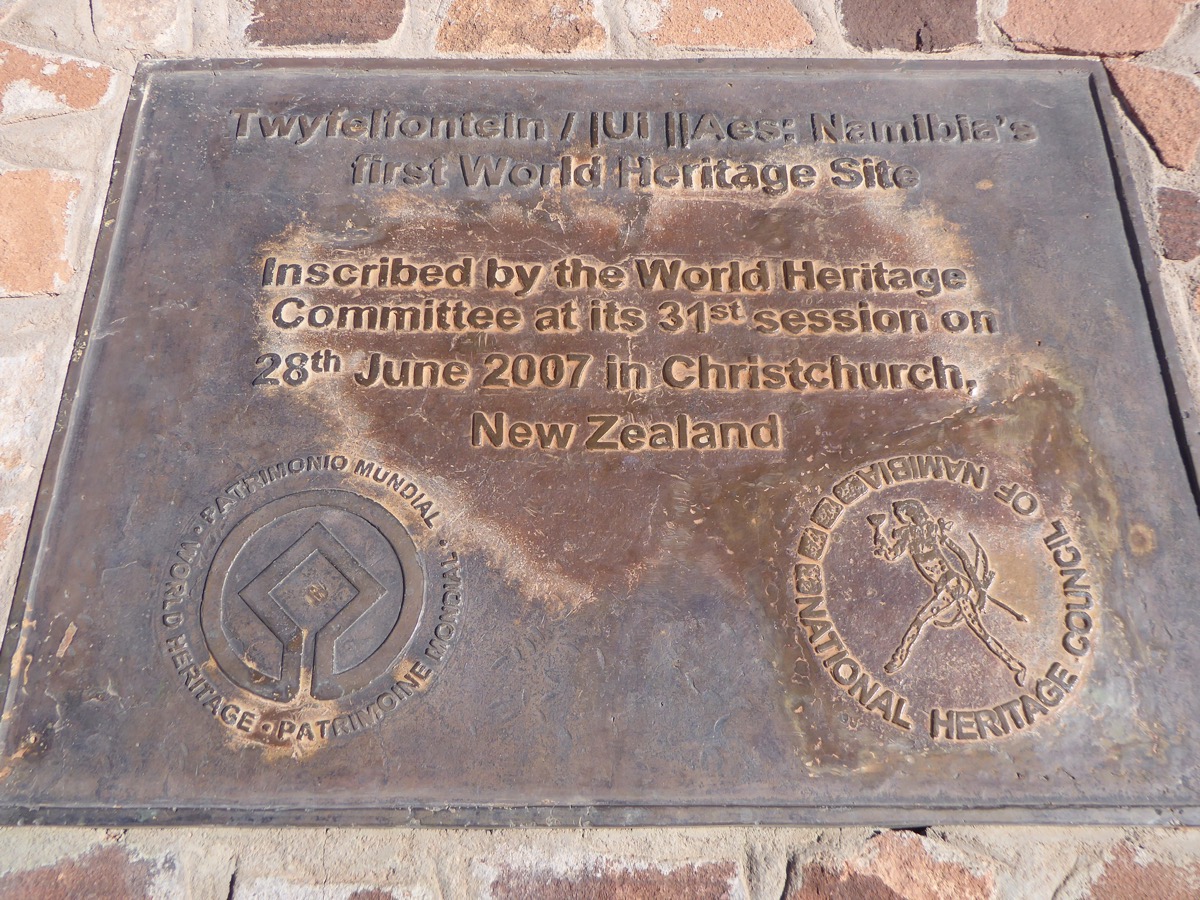 Its name derives from a German settler who described the local spring as “doubtful” or “unreliable”. The engravings were remarkably clear, even though the rocks had moved and eroded over the centuries.
Its name derives from a German settler who described the local spring as “doubtful” or “unreliable”. The engravings were remarkably clear, even though the rocks had moved and eroded over the centuries. 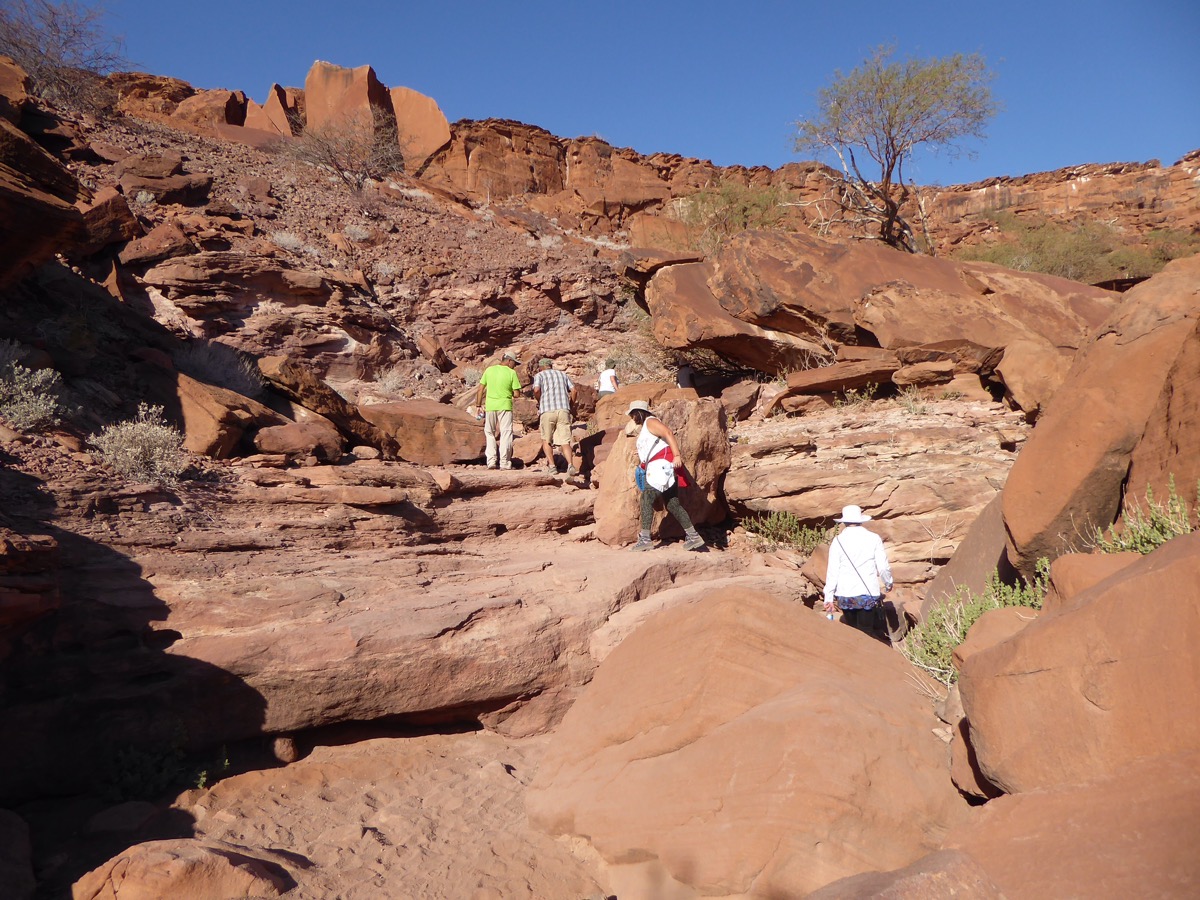 They are engraved into sandstone (rather than paintings on granite) and mainly depict animals although one is a map showing waterholes in the area.
They are engraved into sandstone (rather than paintings on granite) and mainly depict animals although one is a map showing waterholes in the area. 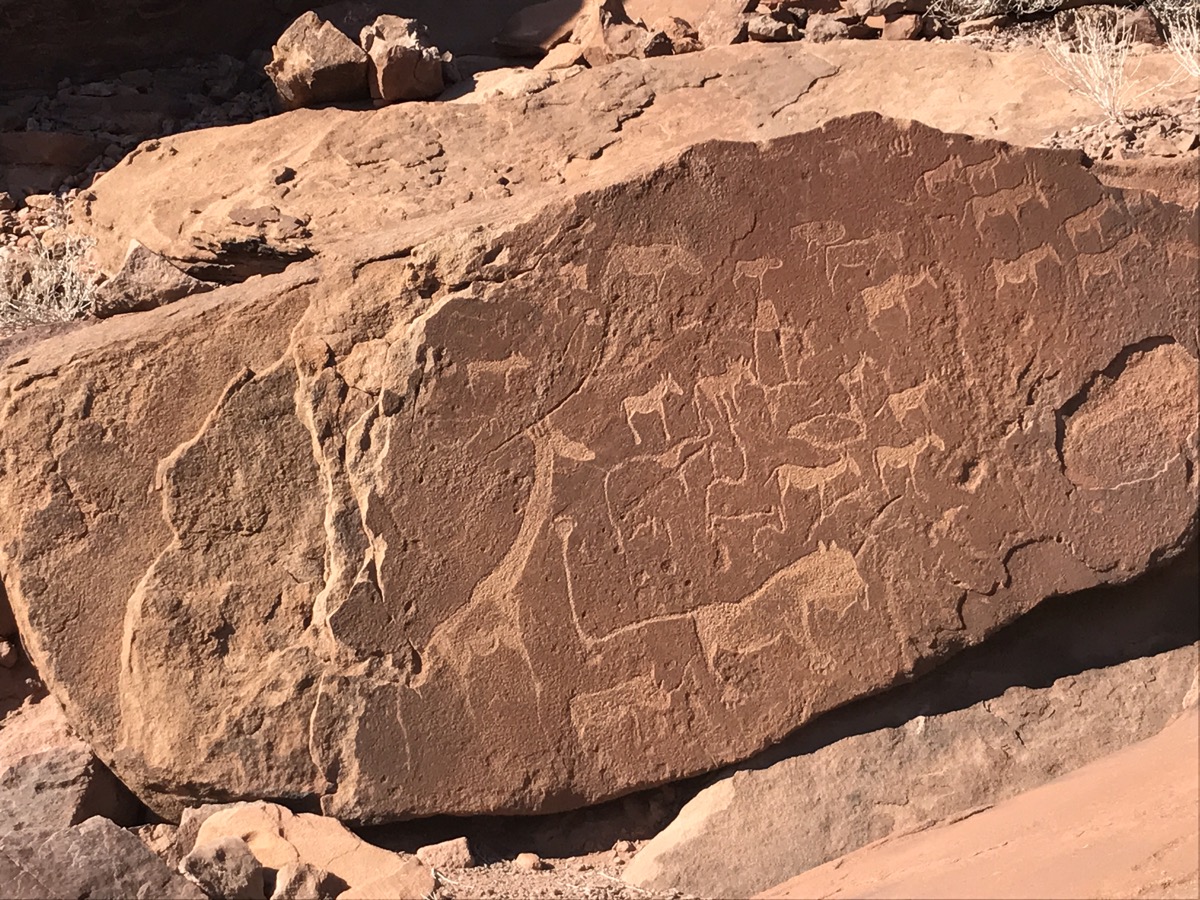 Interestingly they used the same symbols for waterholes as found in Australia and the UK.
Interestingly they used the same symbols for waterholes as found in Australia and the UK. 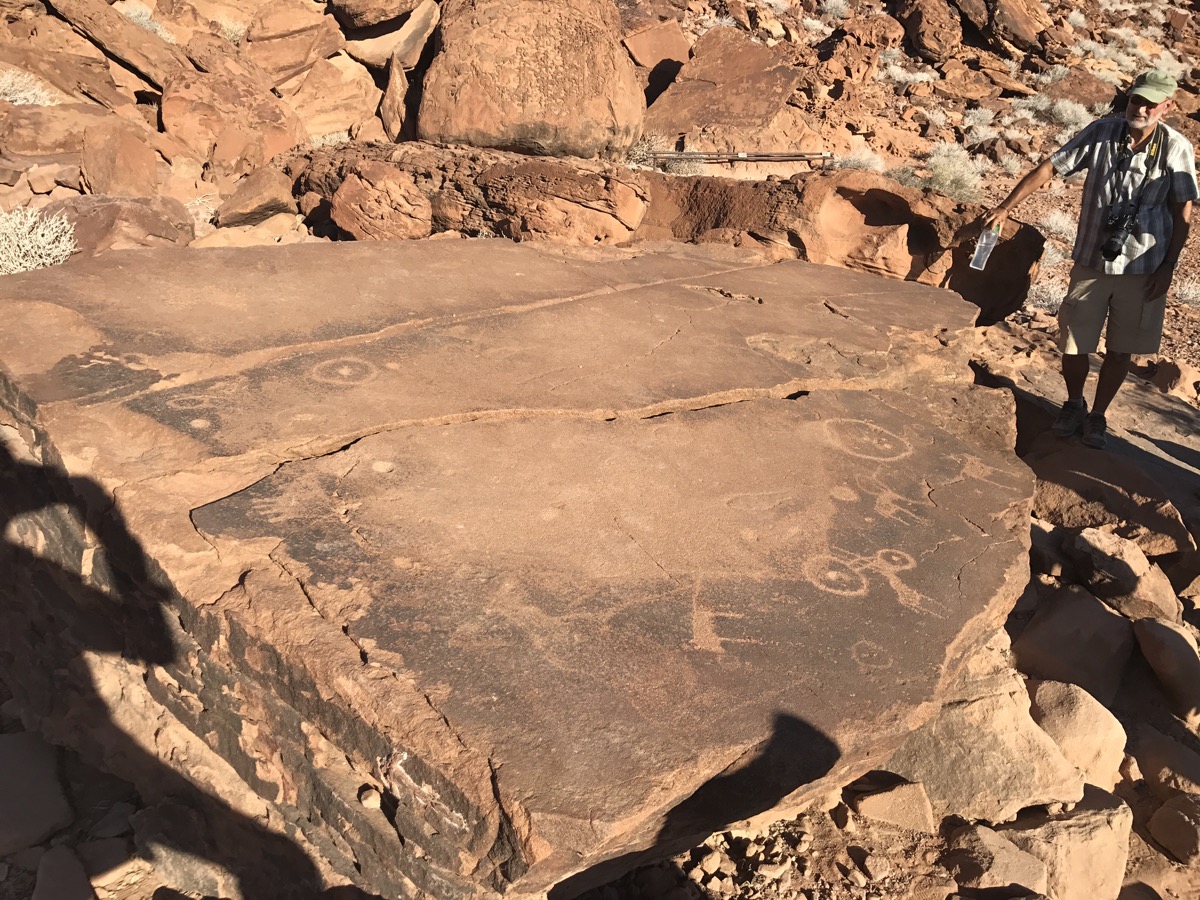 Another rock seems to be a school blackboard that depicts the animal and the footprint beside.
Another rock seems to be a school blackboard that depicts the animal and the footprint beside. 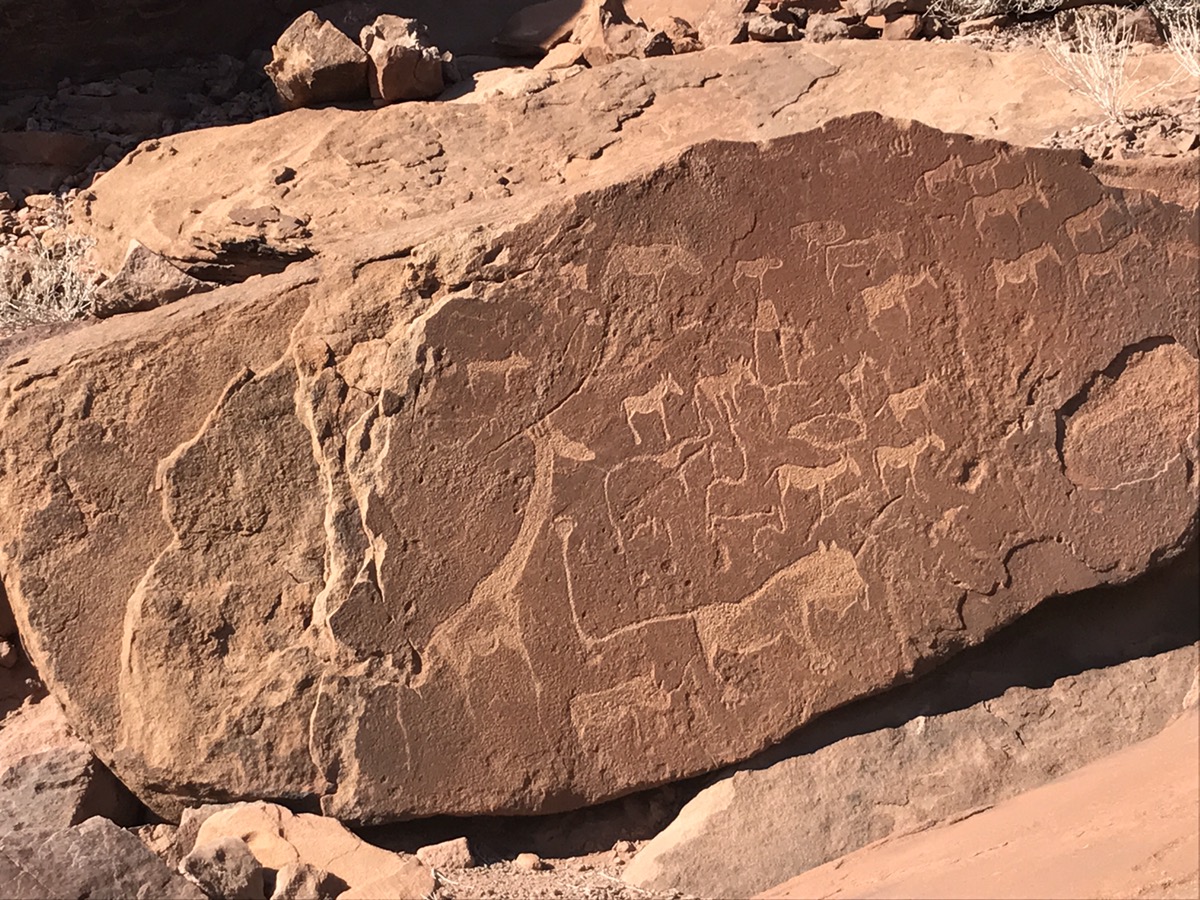
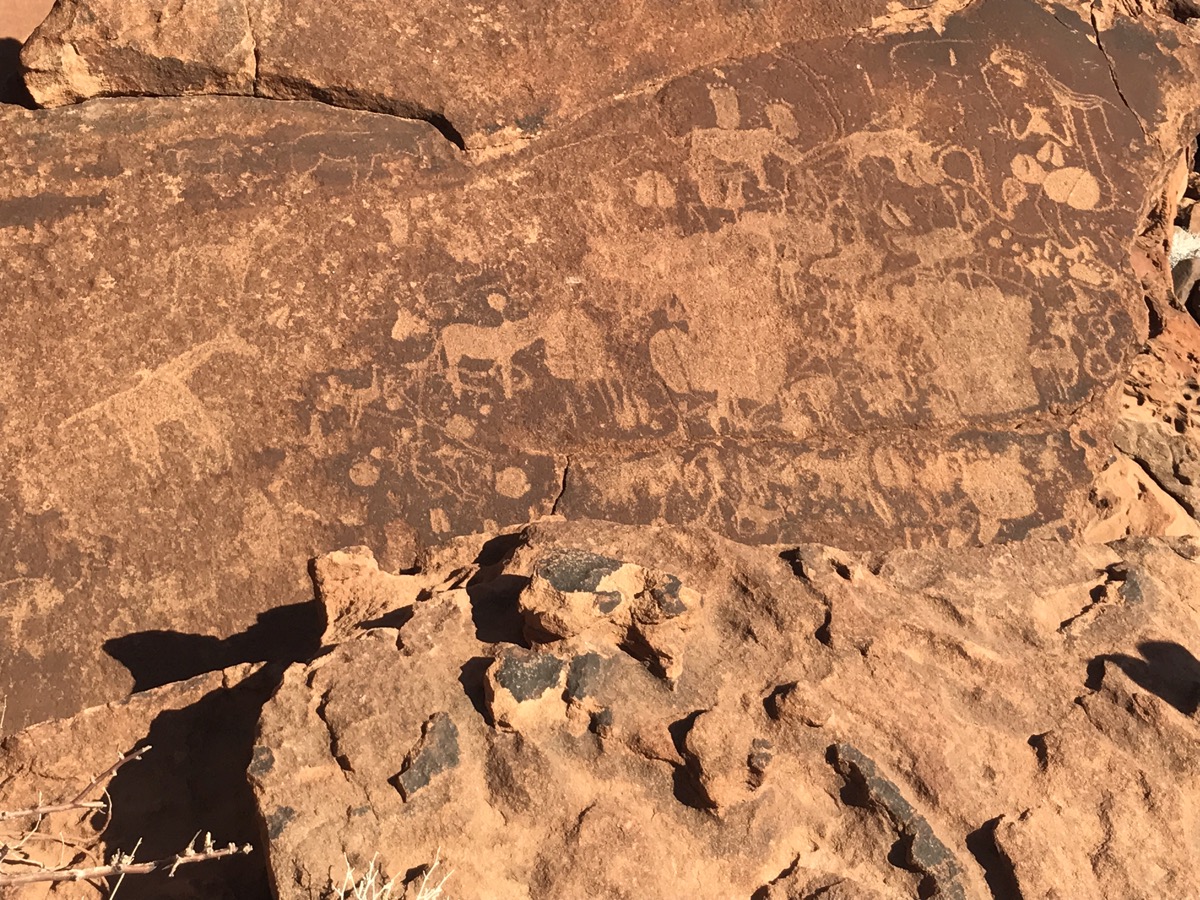
Some of the animals include seals and penguins so they clearly travelled some distance. There is no evidence the sea reached this far. 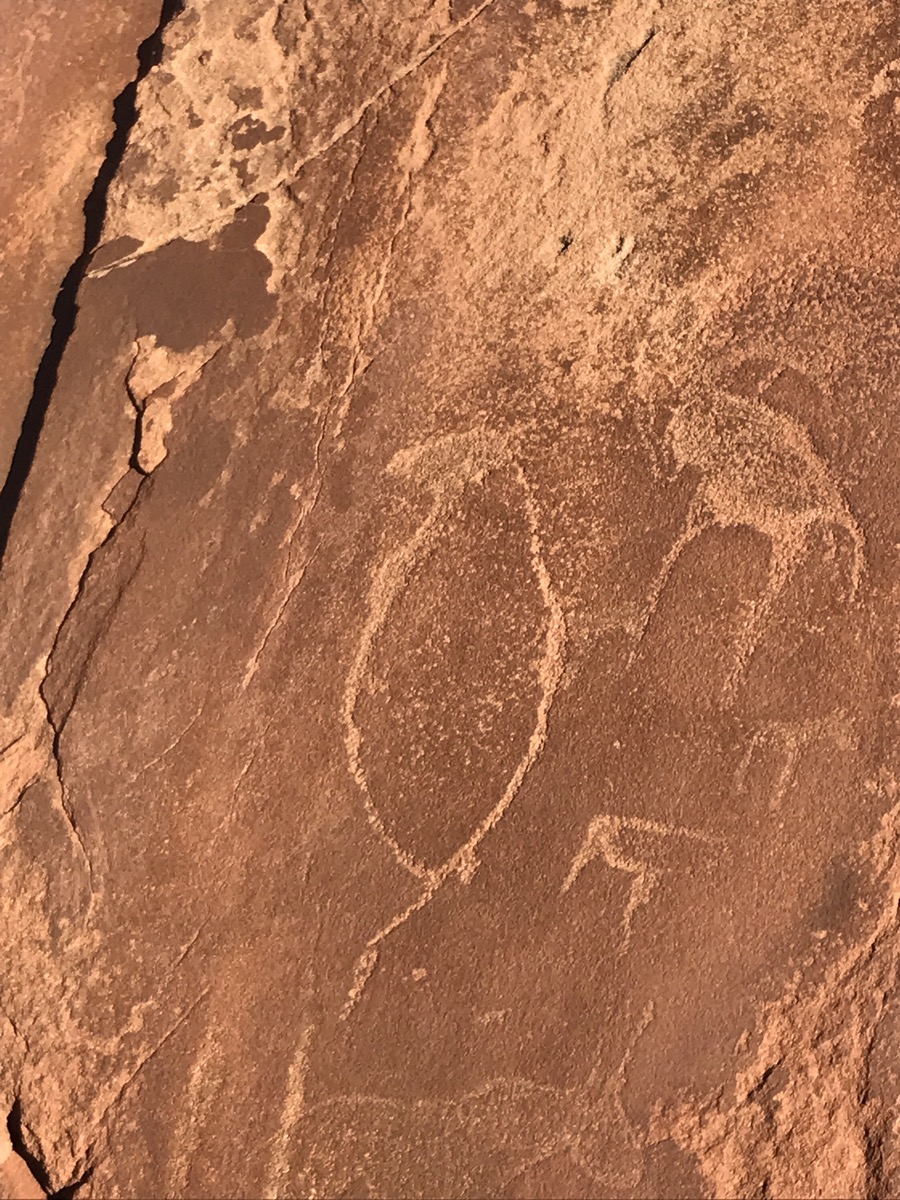 You get a local guide and walk up, over and around the site for over an hour so we were well ready to get back in the car after.
You get a local guide and walk up, over and around the site for over an hour so we were well ready to get back in the car after.
Our lodge is only a couple of kilometres away and just as we arrived Wilfred was told about a herd of desert adapted elephants just nearby so off we went. That was great. 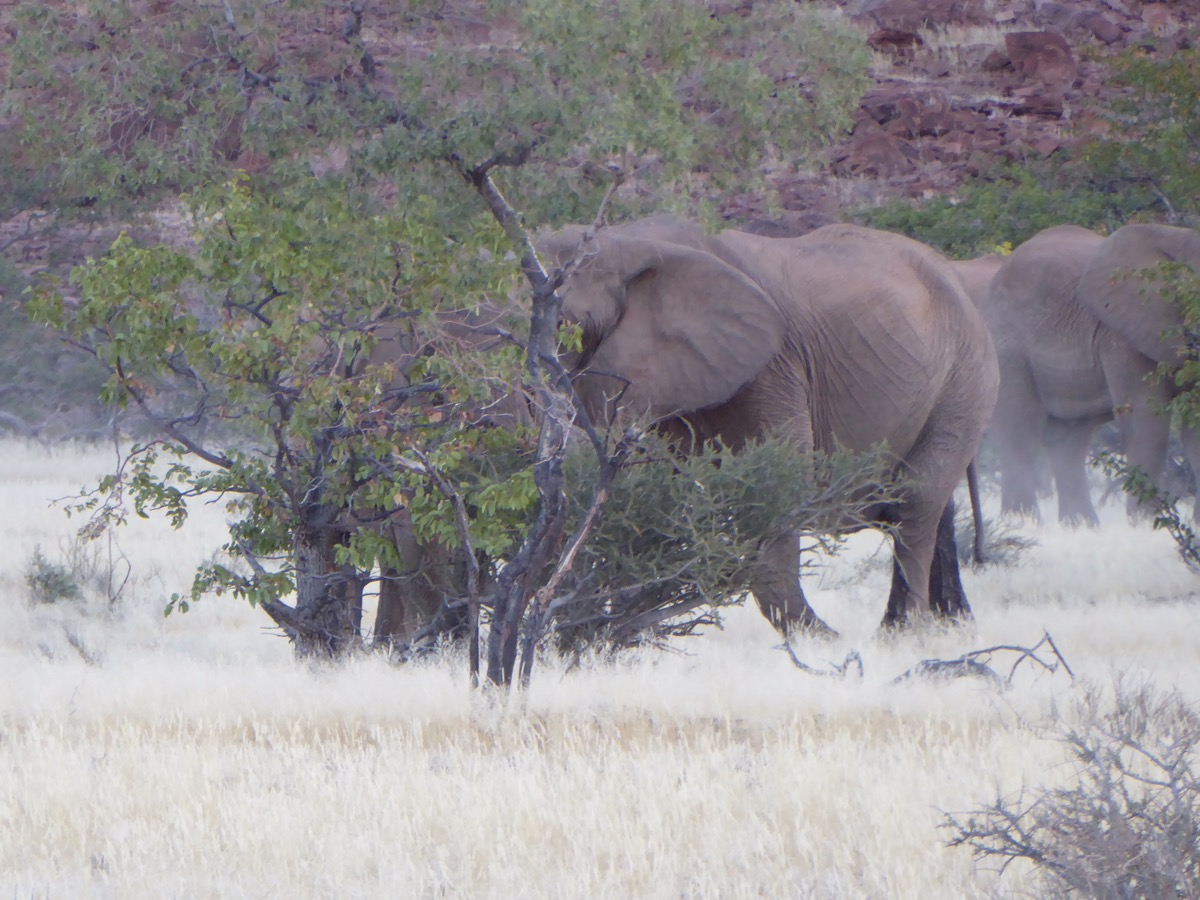 About 15-20 elephants of various ages moving slowly towards the vehicles in the direction of the lodge, where there is a waterhole. We watched outside the car for a while until one of the larger ones came over rather purposefully.
About 15-20 elephants of various ages moving slowly towards the vehicles in the direction of the lodge, where there is a waterhole. We watched outside the car for a while until one of the larger ones came over rather purposefully. 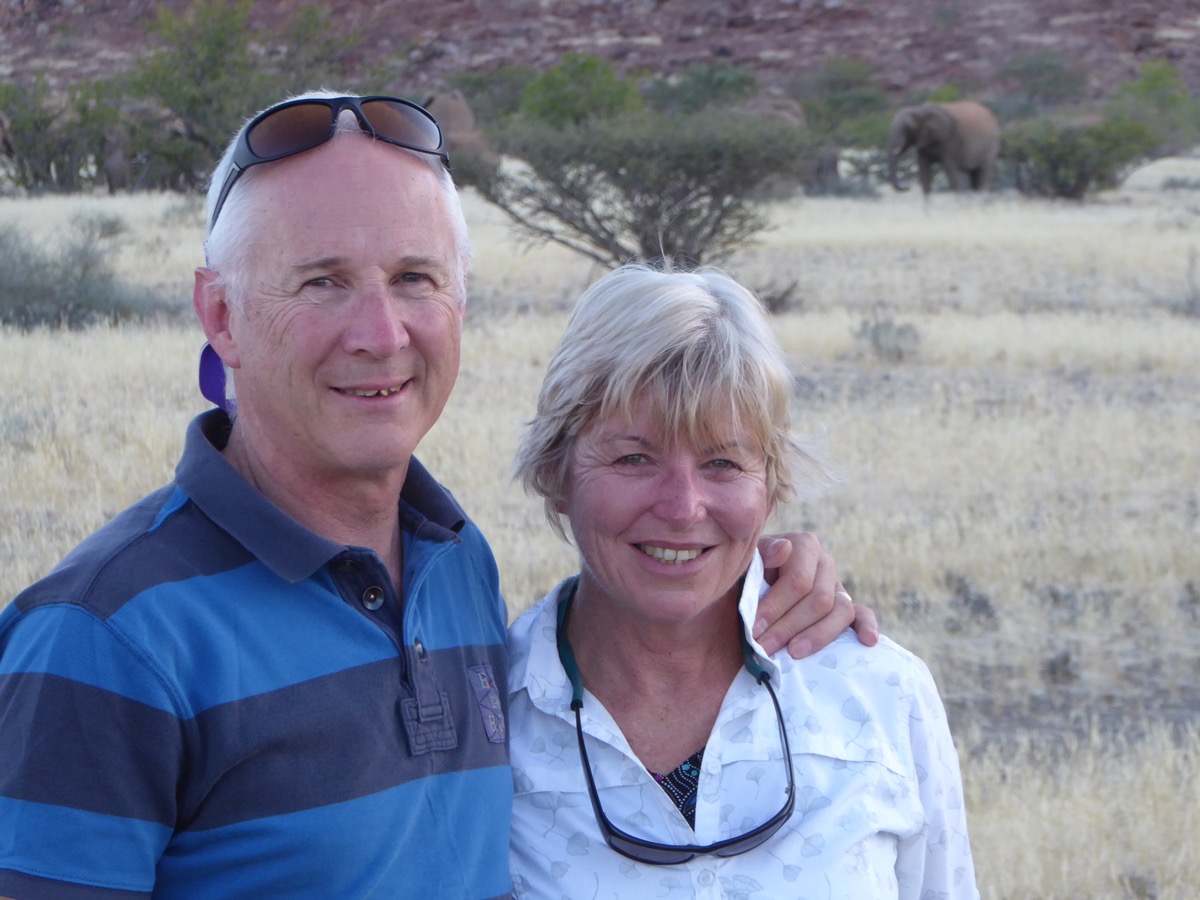 They don’t like you being out when they have babies. These elephants are slightly thinner than others and are specially adapted for the desert. Evidently they stand on their hind legs to reach the highest leaves. (As you go further north there are more trees as there is more rain.)
They don’t like you being out when they have babies. These elephants are slightly thinner than others and are specially adapted for the desert. Evidently they stand on their hind legs to reach the highest leaves. (As you go further north there are more trees as there is more rain.)
Wilfred was rapt to see the elephants as they are clearly his favourite. Then it was a short drive to the lodge. 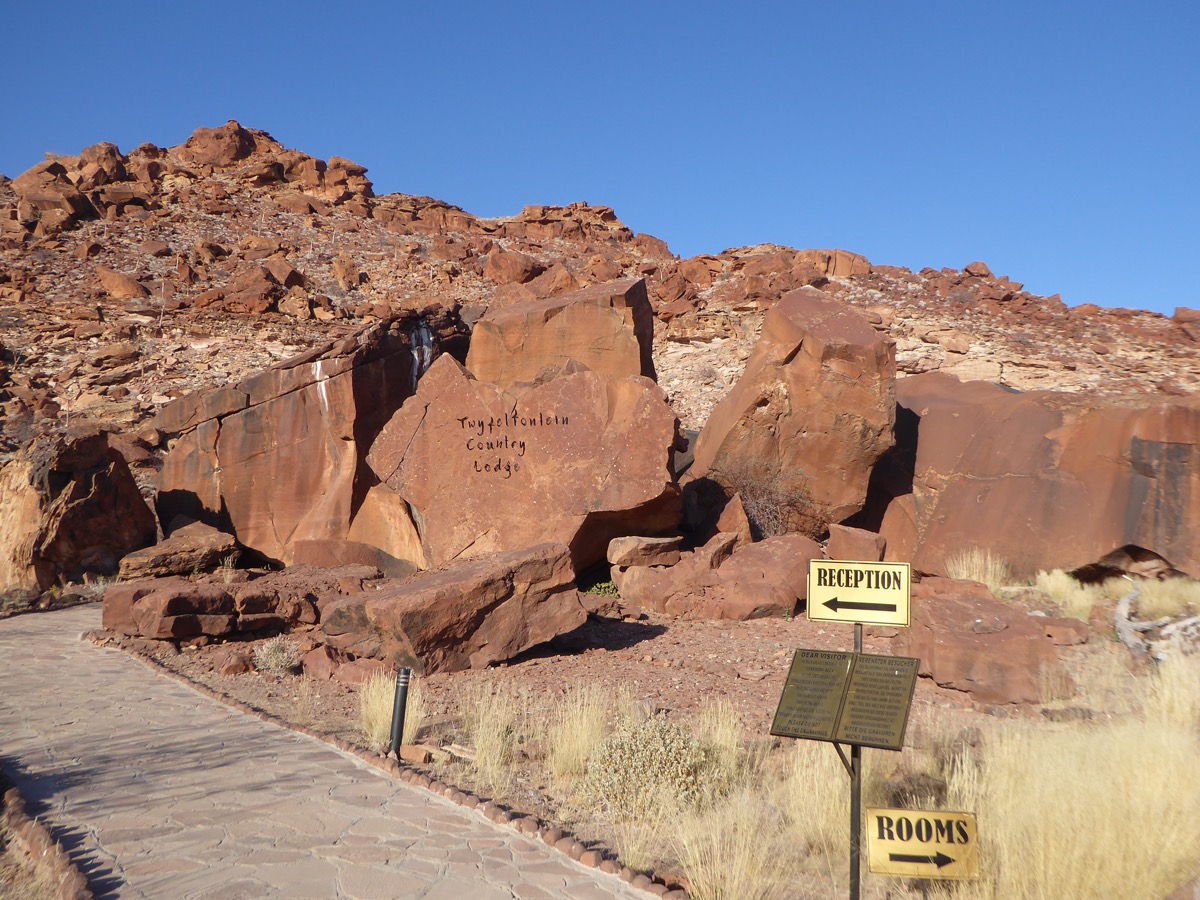
Twyfelfontein Lodge is lovely. 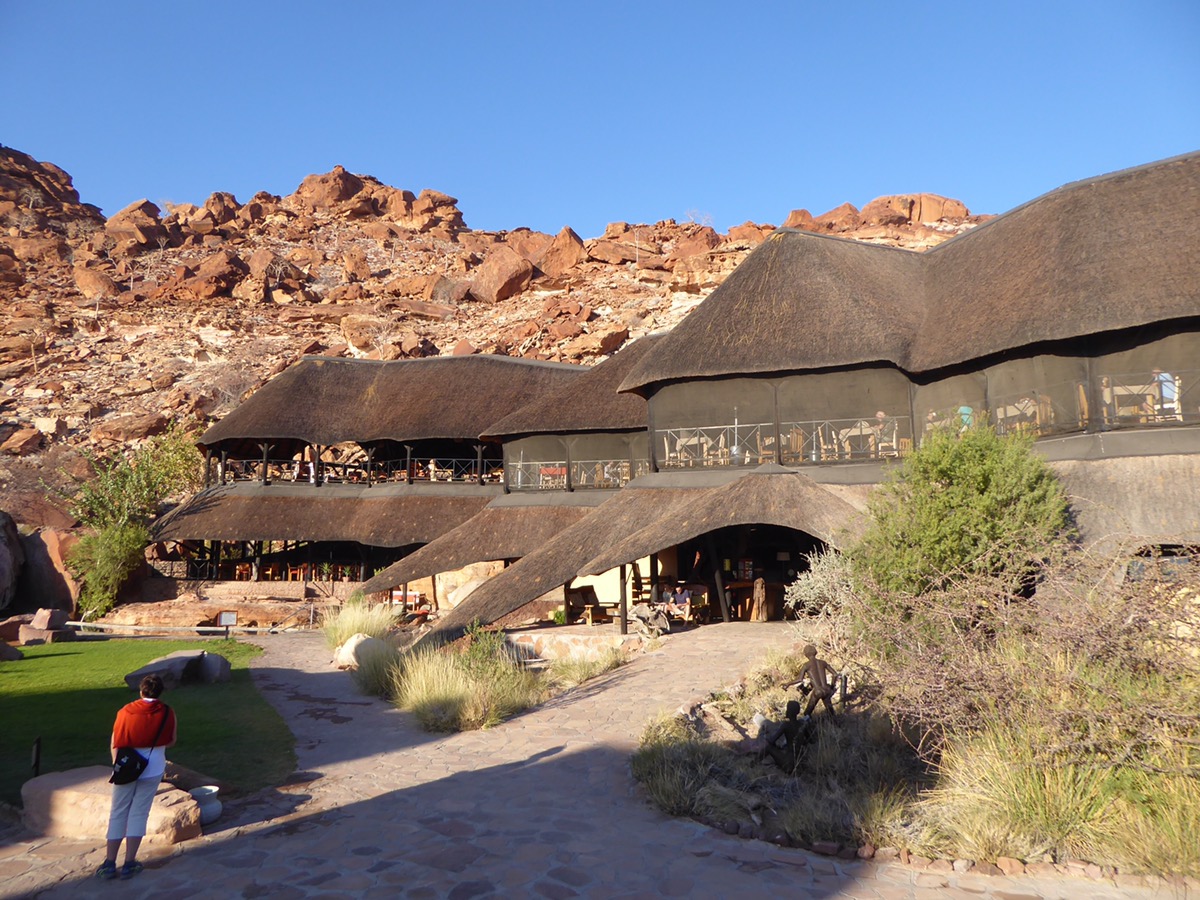
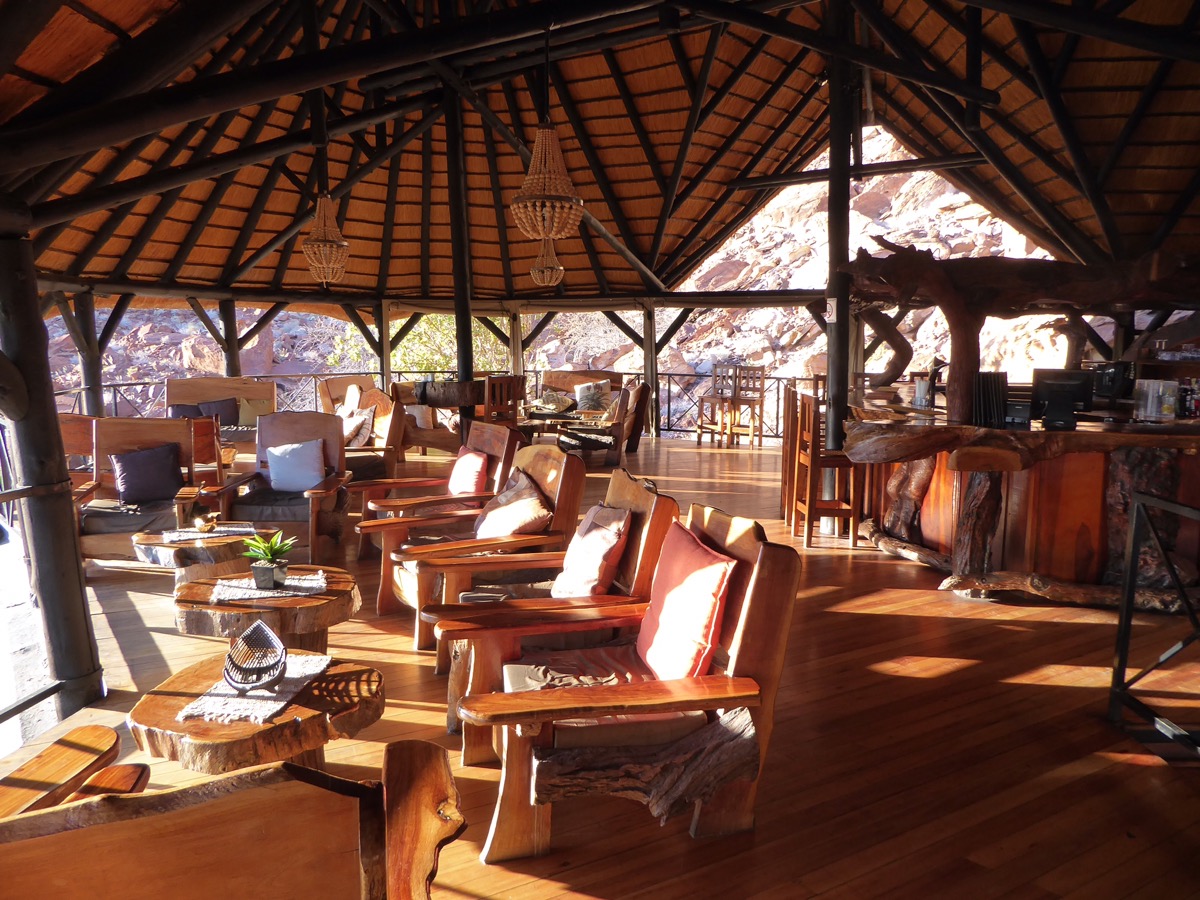 It is built against the side of a granite outcrop and the reception and dining areas look east. The dining room and bar are upstairs and there is a small pool below. The rocks heat up during the day and the building’s design means there is a nice breeze that circulates through the open sided areas. The accommodation is set out in thatched buildings along the side of the outcrop with each building having 6 units.
It is built against the side of a granite outcrop and the reception and dining areas look east. The dining room and bar are upstairs and there is a small pool below. The rocks heat up during the day and the building’s design means there is a nice breeze that circulates through the open sided areas. The accommodation is set out in thatched buildings along the side of the outcrop with each building having 6 units.
Unfortunately a design flaw means there is no through flow of air despite the ceiling fan and mesh covered windows. Each unit backs onto another and there is no vent in the roof. We made a mistake of drawing the curtains when we arrived, turning a nice cool space into an oven and it was a mission getting to sleep. The place didn’t begin to cool down until early morning.
Dinner was a buffet with salads, hot dishes and dessert. The food is excellent and you could select from about 3 types of fish, crocodile, oryx, Impala, beef, pork and chicken. The crocodile tasted a bit like eel and looked like chicken. Wilfred eats a lot of meat. He says most Namibians and South Africans eat a lot of meat and their buffet supports that claim. We passed on dessert. Wilfred had more beef.
